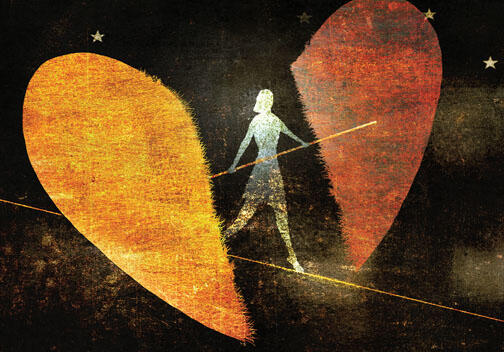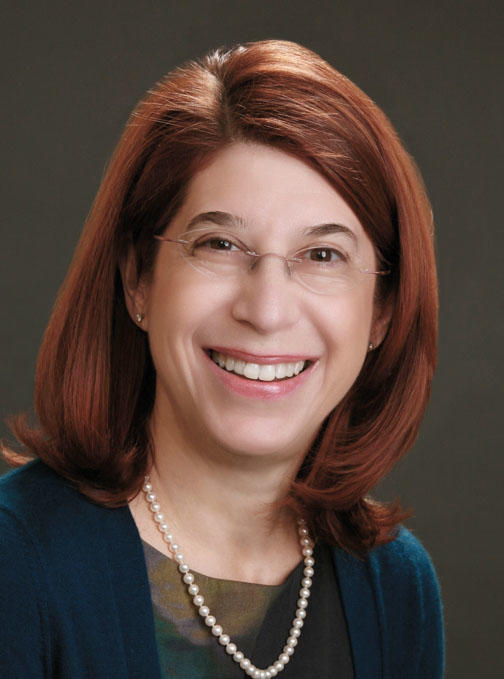In 1978 Massachusetts began transferring patients out of Northampton State Lunatic Hospital — a massive, hilltop asylum opened in 1858 — into community-based programs around the state.
I’d taken a year off between my sophomore and junior years at Yale, and was one of the first interns at the nonprofit Community Support Program (CSP). I lived with 10 former patients and four staff members in downtown Holyoke, a gritty factory town on the Connecticut River.
I remember:
It’s 4 in the afternoon, near the end of our weekly poetry-group meeting that is part of the CSP art-therapy program. We are sitting near the kitchen. Colin leans forward on the chair to read his poem. It ends:
What happens happens by the purest chance,
The only dancer in the only dance.
Colin puffs on his imaginary cigarette, and sits back.
“The birds aren’t singing right now,” says Nancy, tracing the path of imaginary birds with her hand. “I see them in the wisteria, but they aren’t giving me a poem. I’m going to make lasagna.”
Maggie rushes in, throws her purse on the table, and mumbles, “I hate my job. I hate my boss. And my brain is a foggy mess from all this Thorazine.”
“It sounds like you had a rough day?” I follow her around the kitchen.
“The usual. You don’t have to keep me company,” Maggie says. She slams her bedroom door.
I make salad, while Nancy finishes the lasagna. We sit down around the dining room table, share a moment of silence, and I say, “Renny, it’s great to have you back.” Renny giggles, “What happened that night they took me back? I was running so fast I can’t remember.”
“Some things are better not remembered,” Nancy says, and puts her slender hand on top of his.
Joe wears all black and leaves the table frequently to wash his hands. He sits down, stares at me, and says, “My voices are telling me to get a knife and stab you, Carol.”
“Those are just voices, Joe,” Maggie glares at him. “Carol would never hurt you; she just makes you do things you’d rather not — like washing the dishes!”
“Thank you, Maggie,” I say, smiling across the table. “Shall we?” Everyone clears the dishes; we wash and dry them together.
Working at CSP, I came to believe that what separates the mentally wounded from the mentally whole is largely a matter of timing and luck — the resilience you’re born with, what your parents teach you about life’s challenges, which challenges find you and when. Sitting around after dinner, we were all just people, doing our best, each in our own way.
Last year, I took a year off work to finish the book about my father’s death that I started writing in 1979. I found the journals I’d written 30 years ago.
I was 16, a junior in high school, when my father died. Rereading my journals, I see a frightened young girl, by turns driven like the wind to achieve, so angry she imagined she could kill with her teeth, then overwhelmingly numb inside, as if a part of her had died, too. When haunting thoughts raced through my mind, as they often did, I squashed them down as quickly as they arose, racing forward through obstacles of all kinds — “dancing naked and alone” was how I described it at the time.
I told a few people at Yale that my father had died, but no one knew how raw I really was. “I need to get away to figure things out,” I wrote at the top of one page. The rest of that page is blank, and I didn’t write anything else for a week. I had rushed over to the dean’s office, completed the forms to take a year off, and told my mother only after I’d handed them in.
Looking back I see how much I learned from my bridge year. Rereading my journals I notice how the daily rituals of CSP — the cooking, the laundry, the long walks and gentle listening — were as important for my own healing as I wanted them to be for Renny and Nancy and Joe.
“These people are different, but not dangerous,” I wrote. “I’m coming to recognize the ins and outs of how their minds work ... which events trigger which voices ... which doubts cast the longest shadows.” Their psychiatrists provided medicines and labels — various shades of schizophrenia and what is now called bipolar disorder. “It is important to avoid labels, if we are to help each person live the most meaningful life possible,” I wrote in Interning: A Handbook of Community Mental Health, which I co-authored with fellow interns.
“I never realized there could be so much joy in grocery shopping,” I mused one Saturday, “or a brisk afternoon walk and rosy red cheeks.” When Maggie passed her driving test, bought a used Subaru with money she saved from waitressing, and drove to her new job at JC Penney’s, I added, “I will never again take these things for granted: driving or work or driving to work.”
The type of community-based recovery work we were doing at CSP was new at the time. And though this community approach has become more widespread, mental illness still is wrapped in stigma. The lives and potential lost to mental illness remain one of our most pressing public-health dilemmas: One in five families is coping with serious mental illness; one in two college students experiences overwhelming stress and anxiety some of the time; comprehensive, evidence-based treatments for mental illness reach less than a third of the people who need them.
Most people experience their first mental-health challenges between the ages of 18 and 25, often in college. The most successful response keeps students in school, in work, and connected with their community, but very few colleges are adequately equipped to provide mental health services to all the students who need them. Princeton’s Healthy Minds — and other programs like ActiveMinds.org, founded by students and run as peer-to-peer services — are vital. We need more of these programs, and we need their services to be more widely known.














No responses yet